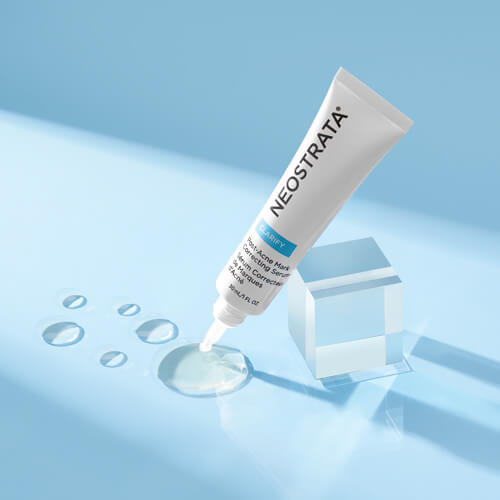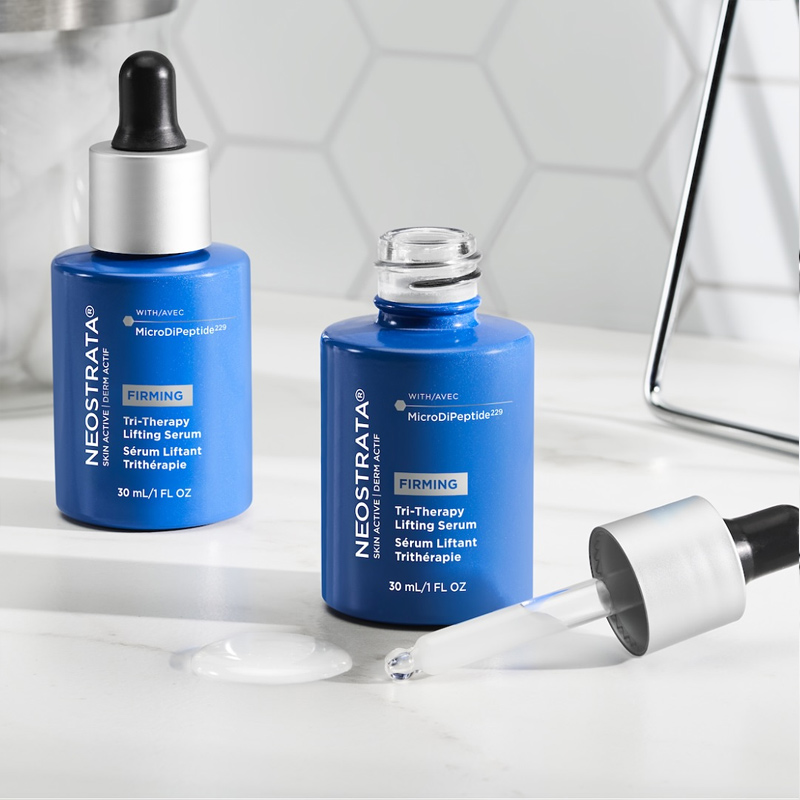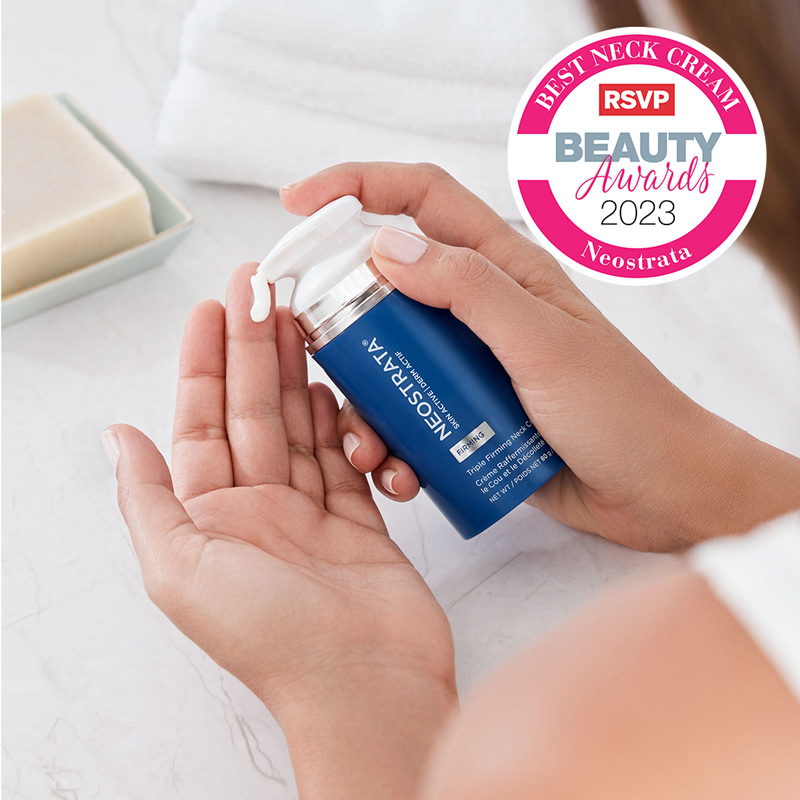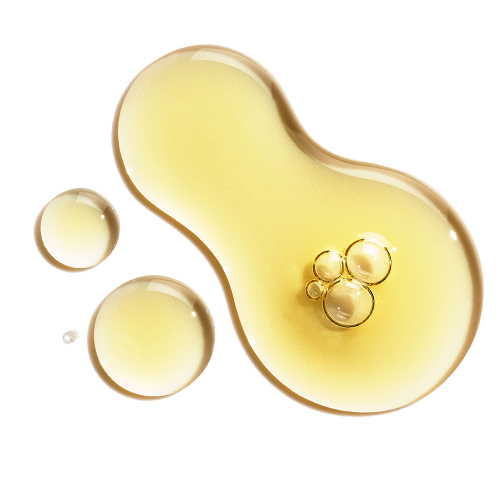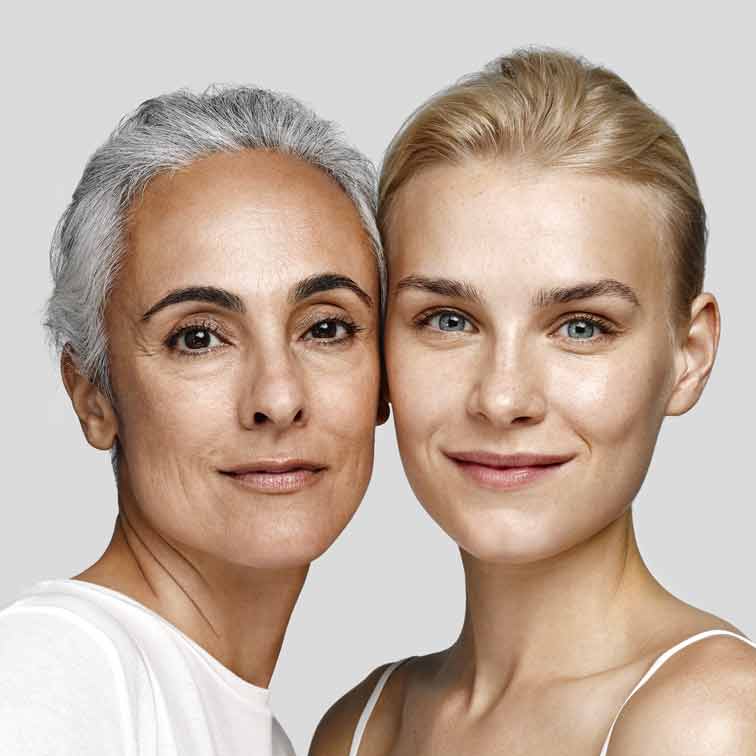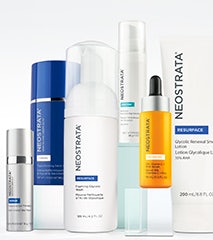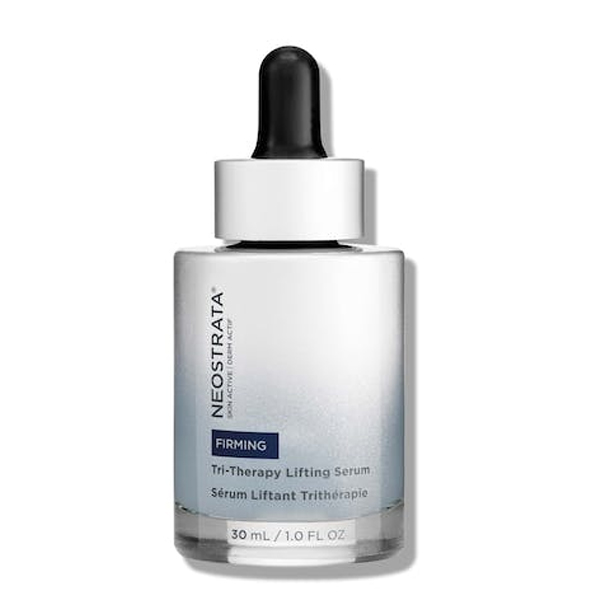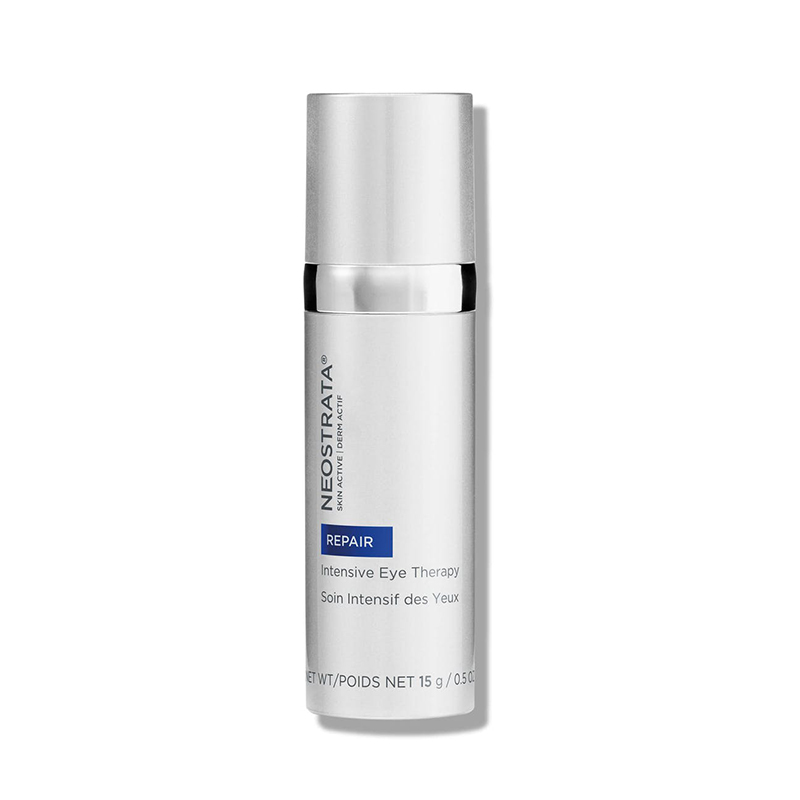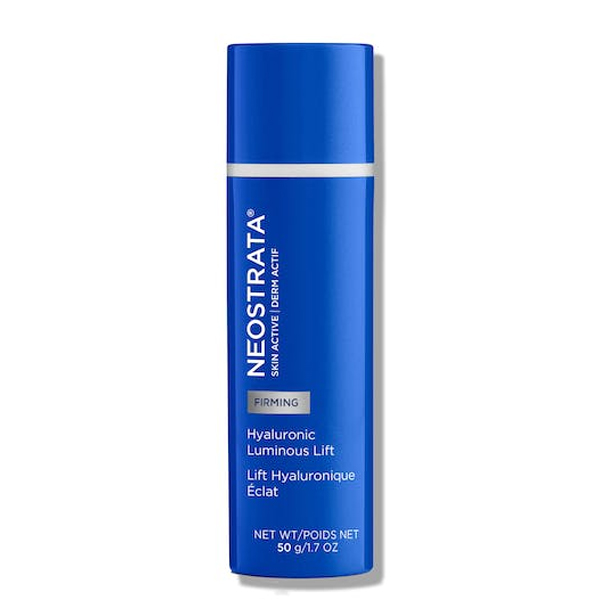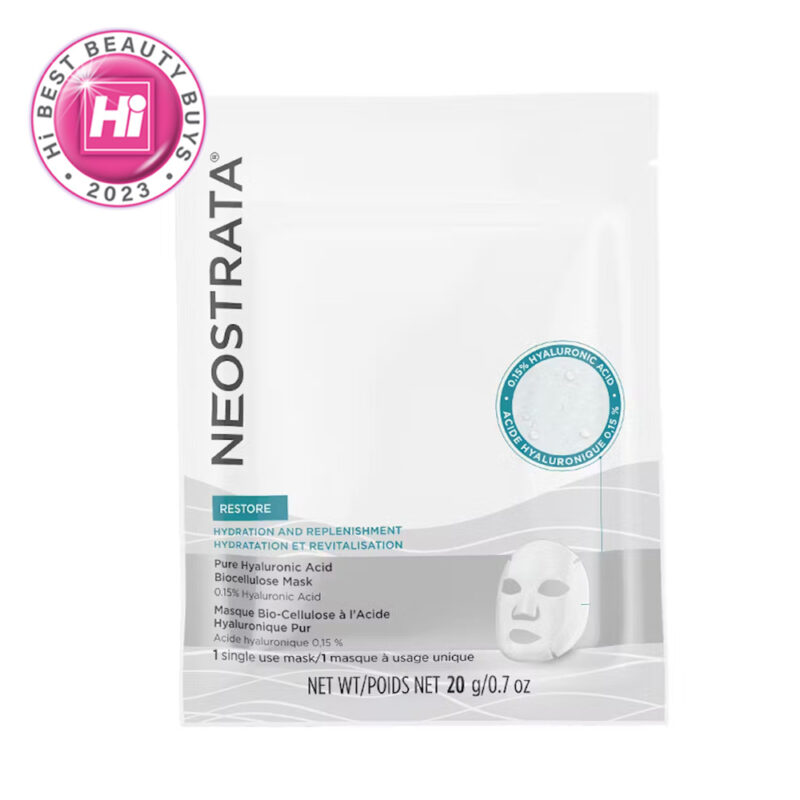What is Hyaluronic Acid?

If skin had a superhero, it would be Hyaluronic Acid. Those who are in-the-know reach for it daily as their go-to hydrating ingredient.
Hyaluronic Acid is such a popular ingredient in serums and moisturisers because it boosts essential hydration. We know that hydrated skin has a plumper, more youthful appearance with less visible fine lines and wrinkles and a healthy, radiant glow. Even better, every skin type – including oily skin – can benefit from this skincare superstar.
In this article, we’re giving you the glow-down on Hyaluronic Acid, a potent hydrating, youth-building ingredient. Read on for a deep dive into the world of Hyaluronic Acid, including what it is, how it works, how it benefits skin and how to add this ingredient into your daily regimen.
What is Hyaluronic Acid?

Did you know that Hyaluronic Acid is found naturally in the body? It helps keeps our skin supple and our bodies move better by adding essential hydration to our skin and joints. Its humectant properties are so potent that just a quarter teaspoon of it can hold about one and a half gallons of water.[1]
There are many benefits of Hyaluronic Acid: the hydrating action visibly plumps skin, smoothing the look of fine lines, wrinkles and texture. It also diminishes the look of crepiness and supports a healthy skin barrier.
Different forms of Hyaluronic Acid can be found in skincare products. Some of the more popular forms of this ingredient include:
- Pure Hyaluronic Acid (high molecular weight): Hyaluronic Acid in its purest form sits on the skin’s surface, forming a protective film to help defend against moisture loss.
- Sodium Hyaluronate (low molecular weight): At the other end of the spectrum is the low molecular weight form of Hyaluronic Acid. This form penetrates deeper into skin’s surface for a plumping and smoothing effect.
- Hydrolyzed Sodium Hyaluronate (medium molecular weight): This form of Hyaluronic Acid goes through a hydrolysis method to break the ingredient into a smaller molecule size, allowing it to further penetrate skin’s surface for longer lasting hydrating benefits.
- Cross-linked Hyaluronic Acid (sodium hyaluronate crosspolymer): This form of Hyaluronic Acid is created by cross-linking lower molecular weight Hyaluronic Acid salts to form a larger molecule which provides increased stability with the humectant benefits that come with higher molecular weight forms of the ingredient.
How Does Hyaluronic Acid Work?
Hyaluronic Acid is a glycosaminoglycan (GAG) with an ability to bind and retain water molecules[2]. It is found in both the epidermal and dermal layers of the skin. In the skin’s surface layers (the epidermis), hyaluronic acid helps support the skin’s barrier function.
When applied topically, in the form of a serum or moisturiser, Hyaluronic Acid acts like a sponge to attract and bind water at the skin’s surface. Combining Hyaluronic Acid with emollient ingredients in skincare formulations can lock in moisture to help prevent trans epidermal water loss (TEWL). This ability to bind water has the added antiaging benefit of leaving skin looking plumper and smoother.
Benefits of Hyaluronic Acid for Skin
Hyaluronic Acid skin benefits are multi-faceted and can promote a healthy-looking complexion with the following actions:
- Hydration: Topical Hyaluronic Acid attracts many times its weight in water to draw hydration into the epidermal layers of the skin. Skincare products that include emollient ingredients like Dimethicone or Glycerin can help lock in moisture to support a healthy, hydrated skin barrier.
- Plumping and antiageing benefits: Hydrated skin has a higher water content than dehydrated skin. This added water helps support the skin’s matrix for a plumper, smoother look that diminishes the appearance of fine lines, wrinkles and crepiness.
- Skin quality: Hydrated skin appears smoother and more radiant. Hyaluronic Acid’s hydrating effect can diminish the look of dull, lackluster skin. An added benefit: your makeup will layer well over smooth, hydrated skin, helping avoid a dry or chalky-looking complexion.
How to Use Hyaluronic Acid Products
Add Hyaluronic Acid to your skincare regimen to reap the benefits of this hydration hero. Serums and moisturisers are two product types that are known to boost and lock in hydration. Get the most out of your Hyaluronic Acid serums by applying to cleansed skin and follow with a moisturiser to seal in all the hydrating benefits of your serum.
Hyaluronic Acid face creams can be applied over serums and treatments to help minimise the potentially drying effects of high strength antiaging ingredients. We love pairing a Hyaluronic Acid moisturiser with Retinol serums for this reason.
Hyaluronic Acid works well with all skin types, though different skin types often enjoy different skin care products. Drier skin types may opt for Hyaluronic Acid in a richer face cream, thereby benefiting from layering a Hyaluronic Acid serum beneath a hydrating moisturiser. Those with combination or oily skin may prefer to apply a Hyaluronic Acid serum followed by a lightweight moisturiser.
How to Choose What Hyaluronic Acid Product to Use
NEOSTRATA products combine Hyaluronic Acid with other benefit ingredients to hydrate and address a variety of additional skin concerns at key steps in your skin care regimen.
TREAT: TRI-THERAPY LIFTING SERUM
A potent serum with Hyaluronic Acid that provides a plumper, more lifted and smoother looking complexion.
TARGET: INTENSIVE EYE THERAPY
Our antiageing eye cream targets crow’s feet, fine lines and wrinkles. This formula with caffeine and Hyaluronic Acid hydrates while deflating the look of puffiness under the eye.
HYDRATE: HYALURONIC LUMINOUS LIFT
A moisturiser featuring 3 types of Hyaluronic Acid for intense hydration in a lightweight gel-cream formula.
BOOST: PURE HYALURONIC ACID BIOCELLULOSE MASK
A Hyaluronic Acid sheet mask derived from nourishing coconut water and filled with .15% pure Hyaluronic Acid. It’s like a drink of water for the skin.
Can You Use Hyaluronic Acid with Retinol?
Hyaluronic Acid and Retinol are an ideal ingredient pairing with antiageing benefits. Retinol enhances skin turnover for smoother more even-toned, radiant looking skin, which perfectly complements Hyaluronic Acid’s plumping and skin-smoothing effect. An added benefit: Hyaluronic Acid’s hydrating properties can help counteract the potential drying effects that can come with some forms of Retinol.
To use this ingredient combination, apply a Retinol serum to cleansed skin, allowing it to absorb before following with a Hyaluronic Acid moisturiser.
Try the pairing: We love Potent Retinol Complex, followed by Hyaluronic Luminous Lift, once daily in the evening. Apply one to two pumps of Potent Retinol Complex to cleansed skin, allow to absorb for 5 minutes and finish with Hyaluronic Luminous Lift.
Is Hyaluronic Acid Good for Acne-Prone Skin?
All skin types, including oily and acne-prone skin can benefit from adding Hyaluronic Acid to their skincare regimen. Those with acne-prone skin will often try to get rid of surface oil by overdoing their cleansing or exfoliation regimen. This tends to compromise the skin barrier, leaving skin irritated and flaky. Hyaluronic Acid’s hydrating properties can help counteract the potential drying effects of an excessive cleansing and exfoliating routine.
When seeking a Hyaluronic Acid product for use on acne-prone skin, look for non-comedogenic formulas that won’t clog pores. If you suffer from excess surface oil, a lightweight product will offer a pleasing aesthetic that absorbs into skin without feeling greasy.
To pair Hyaluronic Acid with products for acne-prone skin, start with a facial cleanser formulated for acne-prone skin, like Mandelic Clarifying Cleanser. Follow with a serum or treatment product for acne-prone skin (we love Targeted Clarifying Gel), and finish with a lightweight Hyaluronic Acid moisturiser.
Pro Tip: Hyaluronic Luminous Lift is a non-comedogenic, lightweight Hyaluronic Acid moisturiser formulated for all skin tones and types. Hyaluronic Luminous Lift pairs well with The Clarify Collection, products for oily and acne-prone skin.
Hyaluronic Acid vs. Other Skincare Ingredients
How does Hyaluronic Acid stack up against other popular skin care ingredients?
Hyaluronic Acid vs. Glycolic Acid: Glycolic Acid is a gold-standard chemical exfoliator. This Alpha Hydroxy Acid leaves skin looking smoother through this exfoliating action, whereas Hyaluronic Acid promotes a smoother appearance through the plumping that accompanies hydration. Hyaluronic Acid’s hydration properties can also help offset the potential drying effect some may experience with Glycolic Acid.
- When to use it: If you have rough, dull surface texture or noticeable fine lines, Glycolic Acid can help provide smoother looking skin and improve the look of fine lines. It can also help promote more even-looking skin tone and diminish the look of dark spots or post-acne marks.
- How to use Hyaluronic Acid and Glycolic Acid in a regimen: Glycolic Acid’s small molecule size also means it can be slightly drying or irritating to skin. Hyaluronic Acid can help reduce potential drying and irritation. Use these ingredients together by using a Glycolic Acid face wash or serum and finish with a Hyaluronic Acid moisturiser to lock in hydration and balance the effect of Glycolic Acid.
- Get the Pairing: Try Glycolic Renewal Serum followed by Hyaluronic Luminous Lift moisturiser to deliver a resurfacing and hydrating 1-2 punch for smooth, healthy-looking skin.
Hyaluronic Acid vs. Vitamin C: Vitamin C is a potent antioxidant and skin brightener, making it ideal for addressing the environmental factors like pollution that can lead to skin discolouration and signs of photoageing.
- When to use it: Vitamin C’s brightening properties can help get your skin glowing. Hyaluronic Acid complements Vitamin C by providing intense hydration that can leave skin looking dewy and radiant, further enhancing your natural glow.
- How to use Vitamin C and Hyaluronic Acid together in a regimen: Treat your skin to this winning combination of brightening and hydrating by pairing a Vitamin C serum with a Hyaluronic Acid moisturiser.
- Get the pairing: Try our 15% Vitamin C + PHA Serum, followed by Hyaluronic Luminous Lift moisturiser for a brightening boost that leaves skin feeling soft and supple.
Hyaluronic Acid vs. Niacinamide: Niacinamide, also known as Vitamin B3, is a multi-tasking ingredient that addresses skin concerns ranging from dull skin to acne-prone skin and signs of ageing[3] like fine lines.
- When to use it: Niacinamide’s ability to take on multiple skin concerns makes it an ideal ingredient for a wide variety of skin tones and types. Add a serum with Niacinamide to your regimen up to twice daily.
- How to use Niacinamide and Hyaluronic Acid together in a regimen: Because Niacinamide can help support the skin barrier, it’s an ideal complement to Hyaluronic Acid’s hydrating properties. If using a serum and moisturiser combination, begin with applying your Niacinamide serum to cleansed skin, allowing it to fully absorb. Finish with a Hyaluronic Acid moisturiser to lock in hydration.
- Get the pairing: Looking to pair the power of Niacinamide with Hyaluronic Acid? Try our Illuminating Serum, a potent brightening serum featuring 4% Niacinamide and NeoGlucosamine and finish with Hyaluronic Luminous Lift moisturiser.
Conclusion:
When it comes to drenching the skin in moisture, Hyaluronic Acid is a hydration superhero. This potent humectant is suitable for all skin tones and types, making it an easy regimen addition for anyone looking to boost skin’s moisture, smooth away the appearance of fine lines and wrinkles and support the skin barrier. If you’re looking for a hydrated, healthy-looking glow, Hyaluronic Acid is a fantastic ingredient to help you achieve your skin care goals.
There are no known side effects for topical Hyaluronic Acid[4], though some may experience sensitivity to skincare formulas that feature additional ingredients.
Hyaluronic Acid can be used with all skin types, including sensitive and oily skin.
Hyaluronic Acid is considered safe for use during pregnancy[5]. If in doubt about using a particular topical skincare ingredient, check with your physician.
It is common for Hyaluronic Acid serums to be used twice daily, morning and evening. Follow the instructions provided on product packaging for optimum usage.
Hyaluronic Acid can be used with all skin types, including sensitive and oily skin.
Some results from using Hyaluronic Acid, such as skin feeling more hydrated, may be noticeable after the first use. Other results like plumper, smoother-looking skin can take 2 to 3 months to become noticeable. Results may vary depending on product formulation and if Hyaluronic Acid has been combined with other benefit ingredients.
Look for one of the following forms of Hyaluronic Acid on the ingredient label: Pure Hyaluronic Acid/Hyaluronic Acid, Hydrolyzed Sodium Hyaluronate, Sodium Hyaluronate or cross-linked Hyaluronic Acid (Sodium Hyaluronate Crosspolymer). Seek formulas with complementary ingredients, like an emollient to help lock in moisture.
Hyaluronic Acid can work well when combined with other topical skincare ingredients, including Vitamin C, Niacinamide, Retinol, Alpha Hydroxy Acids and Polyhydroxy Acids.
Hyaluronic Acid is naturally found in the eyes and joints of the body. Different forms of Hyaluronic Acid are used in topical skincare formulations.
Hyaluronic Acid may be used on other areas of the body and can be found in body lotions, creams and body washes. You can even find this benefit ingredient in hair care products.
References
- https://my.clevelandclinic.org/health/articles/22915-hyaluronic-acid#:~:text=Hyaluronic%20(pronounced%20hi%2Dah%2D,in%20eyes%2C%20joints%20and%20skin
- https://www.ncbi.nlm.nih.gov/pmc/articles/PMC3583886/
- https://health.clevelandclinic.org/niacinamide/
- https://www.nebraskamed.com/facial-plastic-reconstructive-surgery/health/head-and-neck/hyaluronic-acid-what-is-it-what-it-treats-and-side-effects-to-be-aware-of#:~:text=There%20are%20no%20known%20side,Bruising
- https://www.ncbi.nlm.nih.gov/pmc/articles/PMC8884185/#:~:text=It%20maintains%20the%20flexibility%20and,and%20can%20be%20used%20liberally

